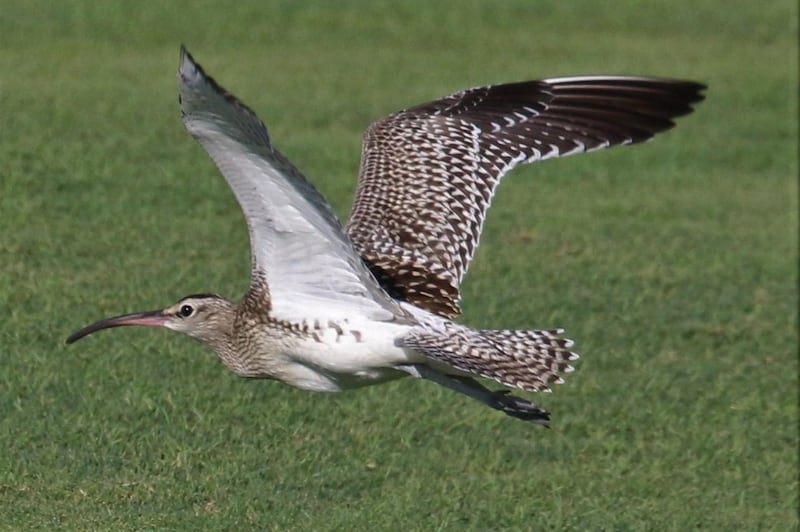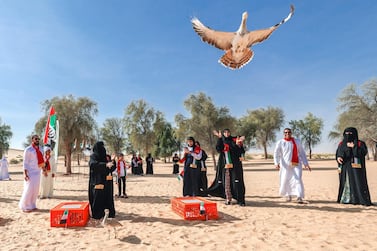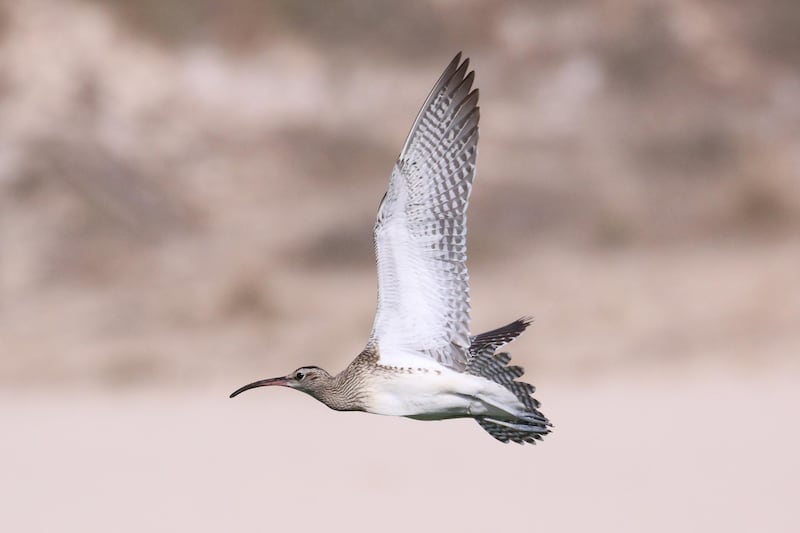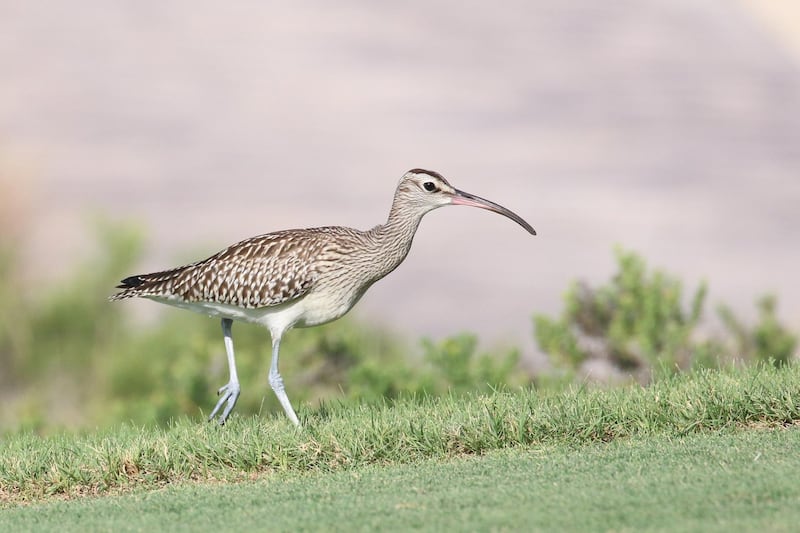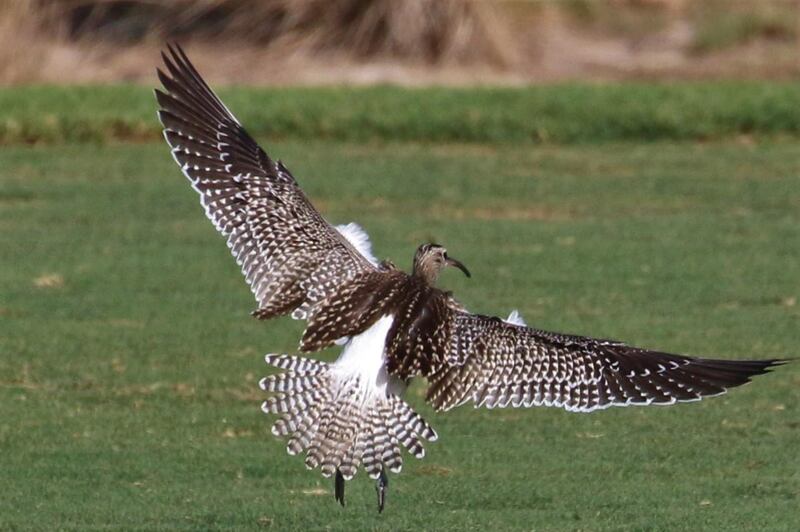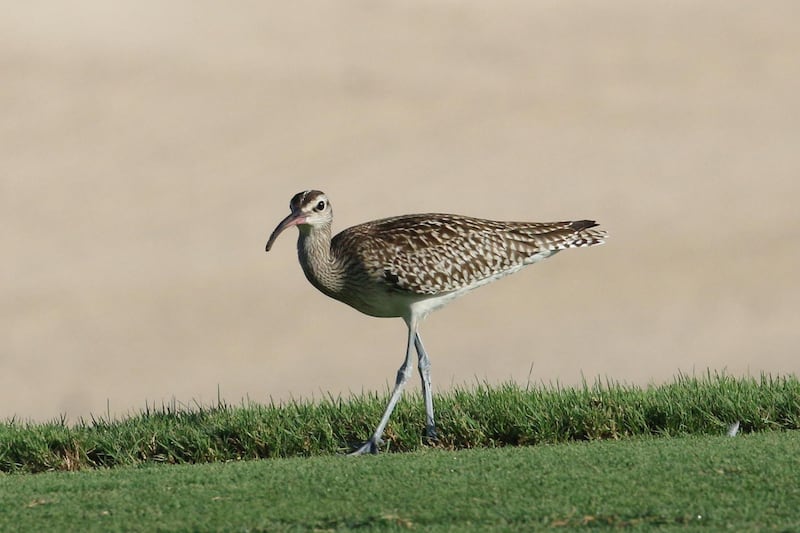In recent weeks, the UAE has made international news in a variety of ways, generating enormous media coverage. Much of that has been related to international politics and the US-brokered Abraham Accord, while attention has also been paid to the steps being taken to enable the economy to emerge from the Covid-19 pandemic.
As a result, there has been relatively little attention paid to a rather remarkable scientific discovery, the presence here for a couple of weeks of one of the world’s rarest birds, a Steppe Whimbrel.
As The National reported last week, a migrant Steppe Whimbrel was found on the Saadiyat Beach Golf Course, staying for at least a couple of weeks, apparently, before it moved onwards on its migration route to Southern Africa.
Internationally, the announcement of the bird’s discovery by two local birdwatchers, Oscar Campbell and Simon Lloyd, generated a flurry of attention in conservation circles.
Posts on social media attracted thousands of viewings, not just in the Middle East but as far away as China and North America. The story even made it on to CNN’s Arabic Service, reaching tens of thousands more.
Just for a bird? But this was a rather unusual bird.
Steppe Whimbrels are the rarest of the five sub-species of a bird called a Whimbrel, whose most common sub-species is a regular migrant through the UAE. Steppe Whimbrels, though, always rare, were declared extinct in 1994, before being discovered again in 1997. There are believed to be only around 100 of them in the world, breeding in Southern Russia and migrating to Southern Africa, where a few have been seen in recent years.
The Saadiyat bird was a young bird, a juvenile, born earlier this year and therefore proving that breeding is still taking place.
The sighting is even more significant because a juvenile has not previously been seen in the field anywhere in the world. Hence the delight of the two finders. I am personally in their debt, because they tipped me off and I was able to see it too. It was a “Mega-Mega", in birdwatching terminology.
The excitement, though, has spread throughout much of the global conservation community, since it shows that there may still be an opportunity to save this highly-endangered bird from extinction.
If there is to be a realistic chance of doing that, a major international effort will be required.
The migration cycle takes the birds from Southern Russia to Mozambique and back. If a conservation strategy is to be prepared, further studies will be needed in its Russian breeding grounds, in its wintering quarters in Southern Africa and along its migration route. We now know, for the first time, that the UAE lies on that route.
Fortuitously, studies in Mozambique are already being supported by the Mohamed bin Zayed Species Conservation Fund. The managing director, Razan Al Mubarak, has noted of the Saadiyat discovery that: “This is a perfect example of why supporting conservation projects for migrating birds is so important.”
The Steppe Whimbrel may not be a particularly stunning bird, except for dedicated birdwatchers. It offers, however, a good example of one of the key aspects of conservation. Many species of fauna migrate over land, like the great animal herds of East Africa. Birds can migrate over the sea, too, while fish and marine mammals like whales migrate within the oceans. To be effective, conservation needs to take an approach that not only preserves individual habitats, and the species within them, but also to take a trans-border, trans-continental view.
Individual enthusiasts, local and international non-governmental organisations and governments all have a key role to play.
Fortunately, from the earliest days of conservation in the Emirates, that kind of approach has been implemented. The decision by Sheikh Zayed to ban the hunting of houbara in the Emirates, for example, arose out of his recognition that the species needed protection in its wintering grounds.
Today, the Abu Dhabi-based International Fund for Houbara Conservation works to develop conservation programmes across the whole of the range states of the species, from Mongolia to the Emirates.
At sea, our Environment Agency-Abu Dhabi, houses the secretariat of a multinational Memorandum of Understanding on the conservation of the endangered dugong. The Mohamed bin Zayed Species Conservation Fund supports research and conservation programmes around the globe.
The global conservation challenge is a complex task, with many little pieces making up the whole.
It is rare, of course, that a particular observation of a single bird migrating through Abu Dhabi, seen by very few people, can make a significant contribution to conservation.
“Our” Steppe Whimbrel, though, does that partly because of its widely-recognised importance in terms of new information about that particular, highly-endangered sub-species.
At the same time, the excitement generated by the sighting helps to draw attention to the valuable work of the UAE’s various conservation organisations at a global level.
It is a welcome piece of good news in what has been a somewhat challenging year.
Peter Hellyer is a UAE cultural historian and columnist for The National
